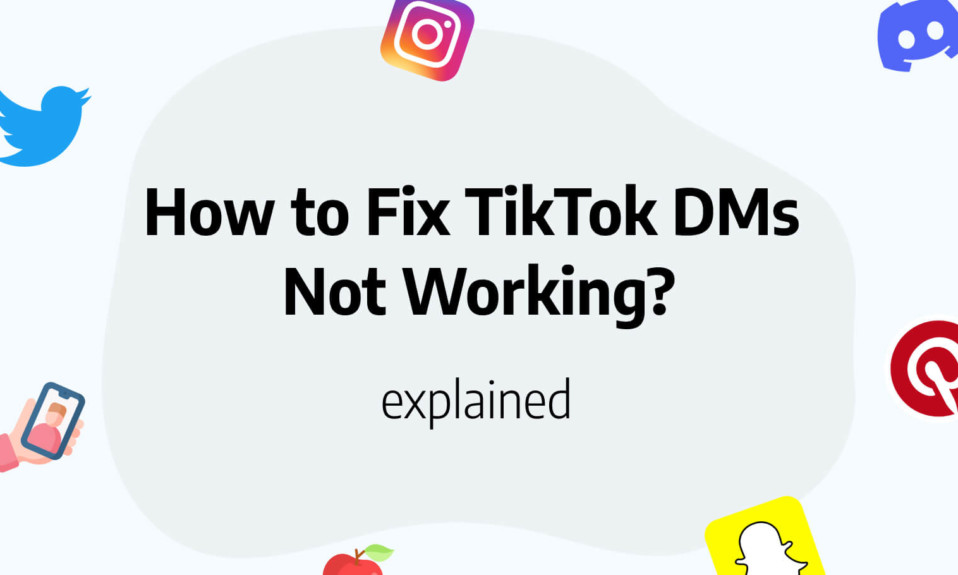In the dynamic landscape of software development, efficiency and coordination are key.
With a trove of tools at their disposal, developers are in constant search of the ultimate project management software to streamline their workflows.
This essential rundown introduces the top twelve project management solutions, tailored to elevate productivity for teams that breathe code.
Immerse yourself in the synergy of functionality and innovation, specifically crafted to resonate with the technical prowess of today’s developers.
12 Best Project Management Software For Developers
monday.com
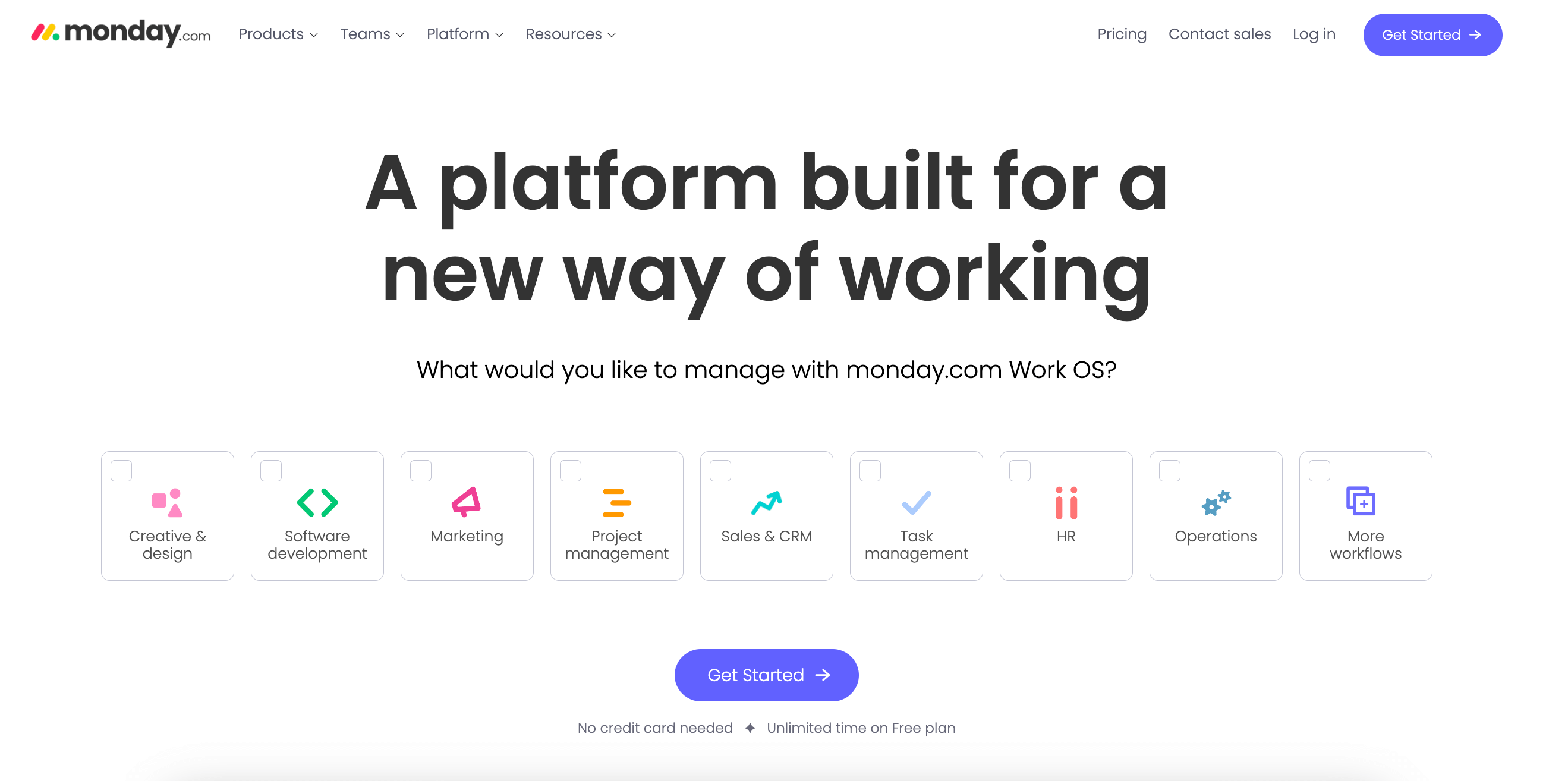
At the heart of this platform lies its versatility in project tracking, offering us customizable workspaces, boards, and items that adapt to our ever-changing development cycles.
With seamless integration capabilities, we can connect monday.com to a host of other tools and services, ensuring our tech stack operates coherently and efficiently.
The visually intuitive interface is meticulously designed to provide us with a clear overview of our project statuses, timelines, and resource allocation, which boosts our productivity and helps us to meet our deadlines with precision.
Moreover, the automation features are a game-changer; they allow us to automate repetitive tasks, ensuring that we spend more time on core development activities with fewer manual interruptions.
Pros:
- Customizable workflows and dashboards allow for a tailored experience to suit our development needs.
- Robust integration options with popular development tools keep everything synchronized.
- Automation of repetitive tasks saves time and reduces errors.
- The visual interface makes tracking project progress an intuitive experience.
- Real-time collaboration tools keep our team connected and informed.
Cons:
- For smaller teams or projects, the pricing structure can be somewhat cost-prohibitive.
- It may require a learning curve for team members not familiar with project management tools.
- Some advanced features are locked behind higher-tier plans, which may limit accessibility for budget-conscious teams.
For who?:
monday.com is purpose-built for teams who value a meticulous organization within their project management processes.
This platform is particularly beneficial for software development teams that manage multiple projects with complex phases and frequent iterations.
Whether ours is a small startup or a robust enterprise, monday.com scales to meet the distinct demands we face.
It’s ideal for teams looking for a mix of structure and flexibility within their workflows and those who require extensive third-party integrations to complement the existing array of development tools.
Zoho Sprints
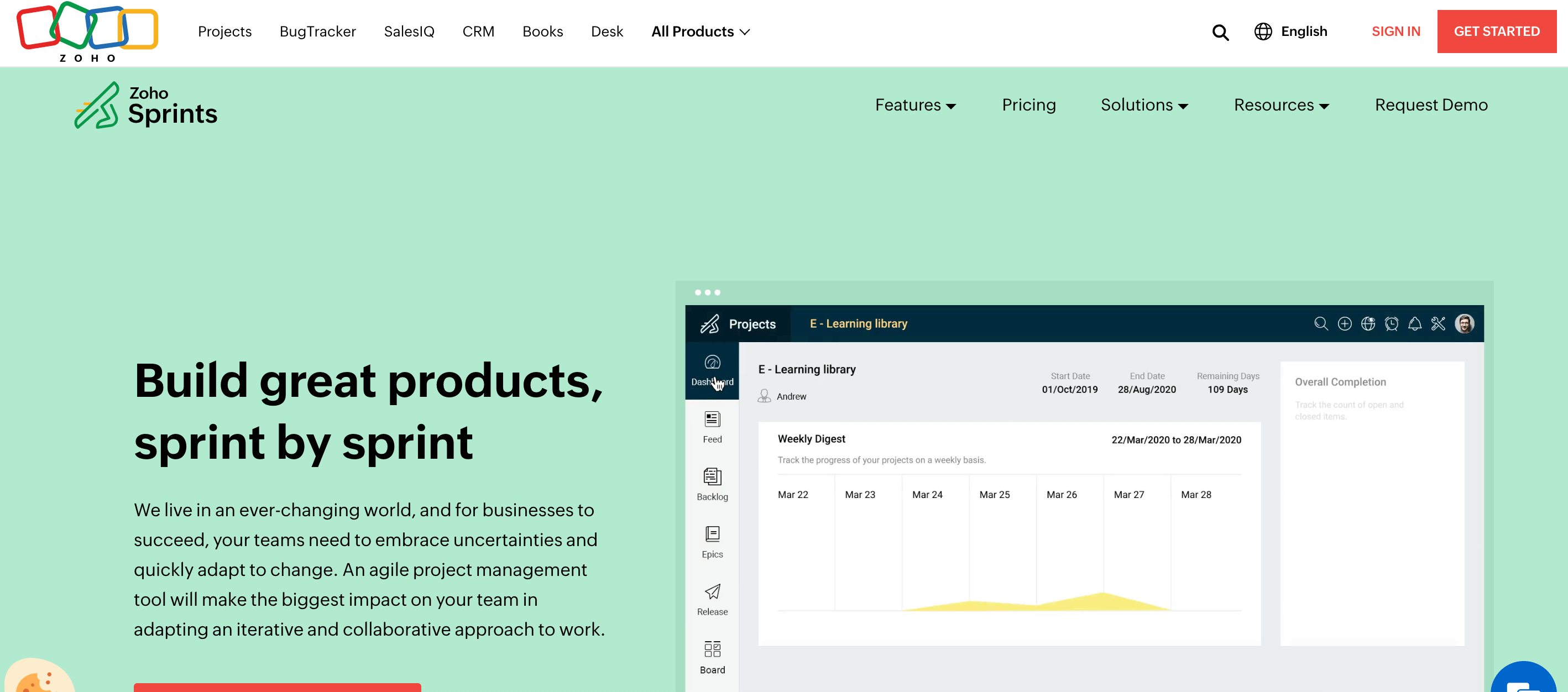
At the heart of our software lies a rich feature set tailored to streamline the planning, tracking, and delivering of software projects, ensuring that we stay ahead of the curve in a fast-paced development environment.
With Zoho Sprints, we embrace iterative progress through Scrum boards, backlogs, and sprints, all while keeping a keen eye on the evolving requirements of our projects.
Customizable dashboards and real-time analytics push our performance towards continuous improvement, while the drag-and-drop interface ensures that managing our agile workflows is as intuitive as it is efficient.
Collaboration within teams becomes a breeze, with features fostering communication and transparency, making it a robust cornerstone for our project management tasks.
Pros:
- Scalable functionality that adapts to our team’s size and complexity.
- Intuitive interface that simplifies task management and boosts productivity.
- Integrated time tracking and velocity charts to manage project pace effectively.
- Real-time collaboration tools that heighten team communication and feedback.
- Comprehensive reporting tools for an insightful overview of sprint progress.
Cons:
- Can have a learning curve for new users not familiar with agile methodologies.
- Integration with external tools can be improved for a seamless experience.
- Customization options may be limited compared to some more intricate systems.
For who?:
Zoho Sprints is particularly well-suited for software development teams who adopt agile methodologies.
Whether we’re part of a small startup or a growing enterprise, our tool can be scaled to fit the project’s demands.
It’s an ideal choice for teams seeking to optimize their workflow, enhance collaboration, and continuously deliver value to customers.
Furthermore, it’s perfect for us who require a project management software that can keep pace with frequent changes and iterations often seen in software development projects, therefore, it’s a powerful ally for developers striving for efficiency and effectiveness in an ever-evolving industry.
Teamwork
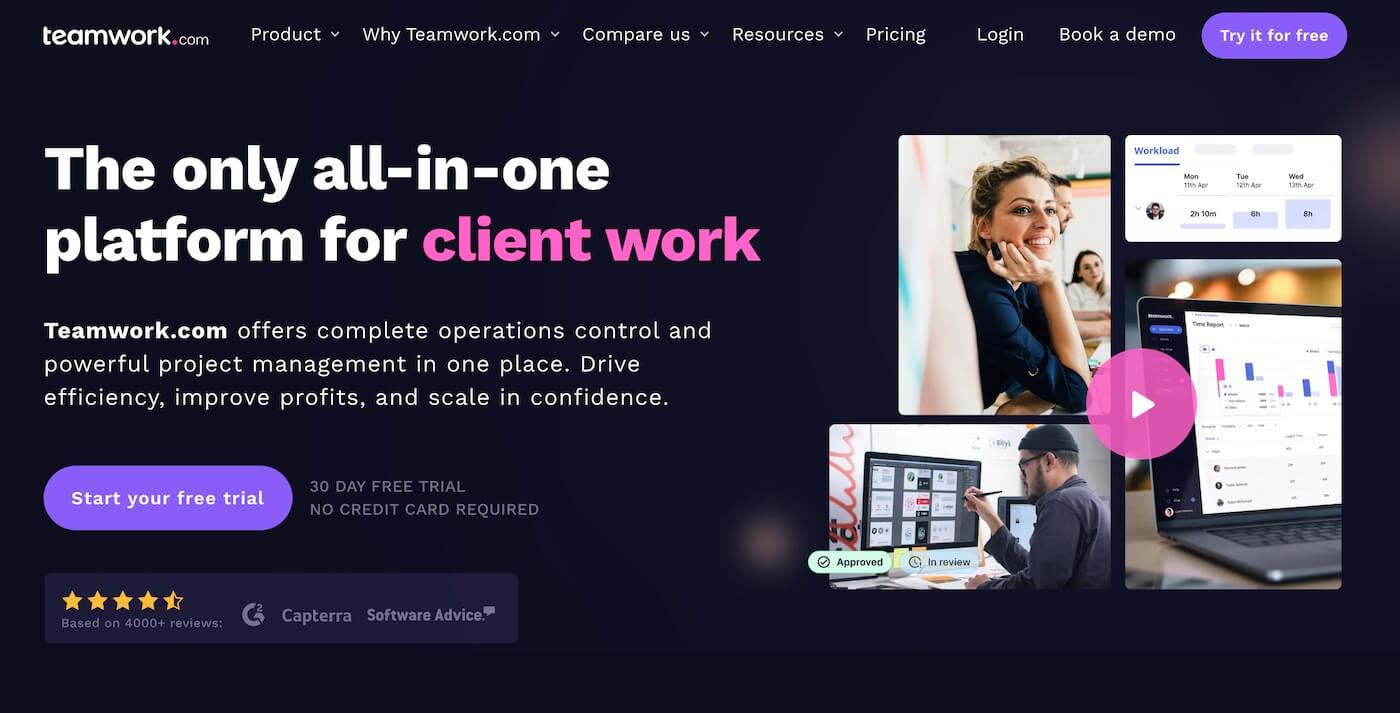
Prioritizing agile workflows, it seamlessly integrates with tools that we developers rely on, such as GitLab, GitHub, and JIRA.
Through its intuitive interface, we can break down projects into tasks and subtasks, track time, and manage resources with ease.
Secure cloud storage, advanced reporting features, and real-time collaboration capabilities empower us to stay aligned and focused, no matter the complexity of our development projects.
With Teamwork, the centralization of project details, documentation, and communication becomes not just an ideal but a reality, streamlining our path from conception to deployment.
Pros:
- Task prioritization and assignment make workflow management straightforward and effective.
- Real-time updates and collaboration keep everyone on the same page.
- Integration capabilities with popular dev tools enhance our existing workflows.
- Time tracking and resource management aid in optimizing the development cycle.
- Advanced reporting features provide comprehensive oversight of project progress.
Cons:
- May present a learning curve for new users unfamiliar with robust project management tools.
- Cost can be prohibitive for smaller teams or startups.
- Can feel overwhelming due to a multitude of features, some of which might be underutilized.
For who?:
Teamwork is ideal for development teams that are looking for a versatile and scalable project management solution.
If your team is keen on customization and enjoys having a suite of features at disposal—ranging from project tracking, document management, to risk identification—then Teamwork could significantly enhance your project delivery.
Larger organizations or those with complex projects will find its robust functionality particularly beneficial in adhering to timelines and maintaining rigorous standards of quality.
Small to mid-sized teams should also consider that while the investment in Teamwork might be significant, the returns in streamlined project management and enhanced team coordination could very well justify the cost.
Basecamp

Its intuitive design simplifies project tracking, with a focus on team communication and task organization.
Basecamp stands out for our team due to its flat-rate pricing model and an uncomplicated interface that strips away the often unnecessary complexity found in other project management tools.
Functionality-wise, Basecamp covers the essentials with to-do lists, file storage, forums, and automatic check-in questions, which fosters a transparent and dynamic workflow.
These features assist us in maintaining a bird’s-eye view of project timelines and deliverables, ensuring that our development efforts stay on track and within scope.
Pros:
- Straightforward user interface enabling quick onboarding for team members.
- All-inclusive pricing model, which can be cost-effective for larger teams.
- Efficient communication tools such as message boards and chat which reduce our reliance on emails.
- Strong emphasis on accountability with features like to-dos and automatic check-ins.
Cons:
- Limited customization options can make it less flexible for specialized project management needs.
- Absence of built-in time tracking, requiring us to integrate external tools.
- May not be as friendly to agile development methodologies without additional add-ons or hacks.
For who?:
Basecamp suits teams and organizations of varying sizes that crave a blend of simplicity and efficacy in their project management software.
It’s particularly beneficial for our development teams who seek to cut through the noise and focus on the work that matters.
Those who prioritize clear communication, streamlined task management, and aren’t in need of intricate reporting or advanced project planning techniques would find Basecamp to be a fitting solution.
In contrast, teams using complex agile or scrum methodologies might find it less aligned with their nuanced workflows.
Nonetheless, for many of us seeking a reliable, no-frills platform to support project oversight, Basecamp hits the mark.
Airtable

With its sleek interface and intuitive design, we find Airtable particularly well-suited for handling our wide-ranging project management needs.
The platform allows us to organize tasks, deadlines, and collaborations with remarkable ease.
What truly sets Airtable apart is its ability to be customized extensively for diverse workflows which is essential in dynamic development environments.
It employs a unique block system, enabling us to add different functionalities like Gantt charts or Kanban boards, making it a highly adaptable tool for managing software development projects.
By striking an exceptional balance between ease of use and sophisticated features, Airtable empowers our teams to streamline their processes elegantly.
Pros:
- Customizable templates and blocks cater to specific project needs.
- User-friendly interface encourages quick adoption across team members.
- Real-time collaboration features enhance team coordination.
- Integration capabilities with a multitude of applications streamline workflow.
- Offers a variety of view options, such as grid, calendar, form, Kanban, and gallery.
Cons:
- Higher learning curve for advanced features which may be daunting for some users.
- Pricing can be steep as more sophisticated features are locked behind higher tiers.
- Limited records per base in the free version can be restrictive for growing teams.
- Mobile app functionality is not as robust as the desktop/web version.
For who?:
Airtable is best suited for teams seeking flexible project management software for developers that can grow alongside their projects.
Specifically, it caters to those who desire a non-linear approach to project management, allowing for a high degree of customization.
Whether our teams consist of non-technical project managers or developers who need an intricate overview of the project’s moving parts, Airtable’s multifaceted platform fits the bill.
It is especially powerful for those who wish to visualize data in various ways and require a quick pivot between different views and project statuses.
However, teams on a tight budget or those looking for out-of-the-box simplicity might need to weigh its capabilities against its cost and learning curve.
Asana

At its core, Asana allows teams to manage projects and tasks in a flexible format, accommodating a myriad of work styles and methods prevalent within the software development community.
It’s built with a robust set of features that promote visibility and communication across all elements of a project, from the granular tasks to the overarching goals.
We can effortlessly create and assign tasks, set deadlines, visualize project progress with boards and timelines, and integrate with a multitude of other tools that are essential to our development ecosystem.
Asana’s intuitive user interface encourages us to maintain a structured but adaptable development workflow, ensuring that our projects remain on track and align with our strategic objectives.
Pros:
- Enhanced team collaboration and communication
- Intuitive user interface that streamlines task management
- Customizable workflows to suit various development approaches
- Powerful integration capabilities with other tools and services
- Advanced features like task dependencies and milestones to manage complex projects
Cons:
- Can become costly for larger teams due to the per-user pricing model
- May present a steep learning curve for new users unfamiliar with project management software
- Some features, crucial to developers, are locked behind higher-tier subscriptions
For who?:
Primarily, Asana stands out as a project management software for developers who prioritize organized workflows and team synergy.
It’s an ideal fit for software teams looking for a balance between functionality and usability, enabling both novice and seasoned developers to navigate its suite of features with ease.
While its scalable nature caters to teams of various sizes, from small startups to large enterprises, budget considerations need to be accounted for.
We find that Asana best serves development teams that require a potent combination of task visualization, project planning, and team collaboration, all embedded within a singular, centralized platform.
Redbooth

It offers an intuitive interface that streamlines the complexities involved in managing multiple projects by breaking down tasks into subtasks, setting deadlines, and assigning specific roles to team members.
We appreciate how Redbooth integrates seamlessly with a variety of tools including Google Drive, Dropbox, and Slack, which enriches the developer experience by keeping all their resources in one accessible location.
The platform’s visual task boards and timelines enable us to track progress with ease, while its built-in reporting features provide insightful analytics, turning complicated data into actionable intelligence.
Pros:
- Intuitive user interface that promotes easy adoption and usage
- Integrated task boards and timelines for comprehensive project tracking
- Seamless integrations with multiple third-party tools and services
- In-built reporting functionality for insightful analytics
- Streamlined communication features that reduce the reliance on external apps
Cons:
- Limited customization options for more advanced project needs
- May not scale as efficiently for very large enterprise teams
- Could introduce a steeper learning curve for those unfamiliar with project management tools
For who?:
Redbooth presents itself as an optimal solution for small to medium-sized developer teams seeking to enhance their project management techniques without sacrificing simplicity.
Our peers in the software development industry who need a balanced mix of functionality and user-friendliness would find great value in Redbooth.
It caters primarily to those who wish to elevate their project management approach with a tool that strikes the right chord between comprehensive features and an uncomplicated layout.
However, it is worth noting that teams requiring highly bespoke or granular project control might need to weigh Redbooth against more robust platforms tailored to extensive enterprise environments.
Jira

We understand Jira as the backbone for tracking issues, bugs, and agile project management intricacies.
Developed by Atlassian, it boasts customizable workflows to adapt to our team’s unique processes.
The software shines with its features that support Scrum, Kanban, and mixed methodologies, making it a versatile tool for a variety of development projects.
The robust reporting capabilities let us dive deep into analytics, helping us not only track but also predict team performance and project timelines.
Jira integrates seamlessly with numerous development tools, creating a centralized hub for our project management needs, from code repositories to continuous integration pipelines.
Pros:
- Flexible project management: Adaptability to various agile methodologies like Scrum and Kanban.
- Powerful integration: Seamless connection with many developer tools and apps expands its functionality.
- Robust reporting and analytics: Helps in assessing project health and forecasting progress.
- Customizable workflows: Tailor the process to fit our team’s specific requirements, enhancing efficiency.
- Issue and bug tracking: Precise tracking capabilities that are critical for the development lifecycle.
Cons:
- Complexity for new users: Can be overwhelming, with a steep learning curve for those unfamiliar with project management tools.
- Can be resource-heavy: Sometimes it may run slow or require significant resources, impacting its performance.
- Cost: While it offers a free tier, advanced features and a larger team size require a paid subscription which can add up.
For who?:
Jira is ideal for development teams seeking an agile project management tool ready to shape around their evolving needs.
Whether we are a small startup or a large enterprise, Jira caters to a broad spectrum of organizations that are looking to streamline their software development cycle and bug tracking.
It’s a fit for teams that crave structure but also demand the flexibility to customize their project management approach.
For companies invested in the Atlassian ecosystem, such as Bitbucket or Confluence, Jira becomes an even more natural choice, enabling a more cohesive workflow coordination.
Smartsheet
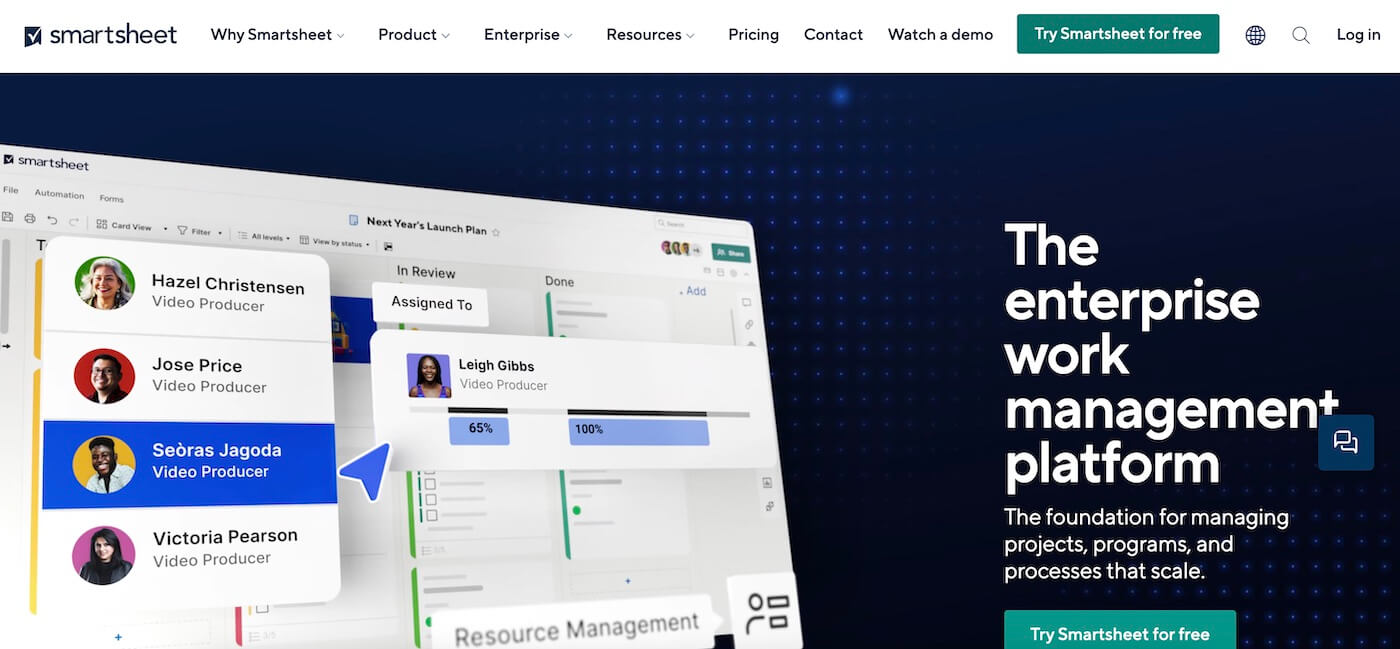
Its spreadsheet-like interface provides us, developers, with a familiar environment, while its enriched features extend far beyond the capabilities of traditional spreadsheets.
Smartsheet integrates with our crucial development tools, facilitating seamless synchronization of complex project timelines, resource management, and budget tracking.
The ability to create, share, and manage workflows with transparency enhances our productivity and keeps everyone aligned with project objectives.
Advanced features like automated alerts, interactive dashboards, and report generation make Smartsheet a robust solution, fostering an environment where we can efficiently track the progress of our development projects from inception to deployment.
Pros:
- Robust integration capabilities with popular development tools and systems.
- Real-time collaboration features, enabling synchronous work and updates.
- Customizable dashboards and reports for clear visibility into projects.
- Automated workflow options to save time and reduce manual errors.
- Scalable for teams of various sizes, adapting to project complexities.
Cons:
- Can be overwhelming for new users due to its extensive features.
- Higher cost compared to some other basic project management tools.
- Requires a learning curve to fully utilize advanced features effectively.
For who?:
Developers seeking a powerful project management software that encompasses more than just task tracking would find Smartsheet an invaluable ally.
Whether it’s for a small start-up or a large tech enterprise, Smartsheet caters to our need for a centralized platform that is both adaptable and comprehensive.
For us who thrive on intricacy and require flexibility to manage our coding sprints, bug tracking, and software releases, Smartsheet offers a potent mix of features capable of supporting our complex workflows while promoting efficiency and transparency within our teams.
Workamajig

At the heart of Workamajig lies its ability to seamlessly integrate project scheduling, resource allocation, and financials into a user-friendly platform, ensuring everything from our agile workflows to complex project timelines are handled with utmost precision.
The software’s real-time collaboration tools enable us to maintain agile communication, while time tracking features ensure that project hours are accurately logged and billed.
With its adaptable reporting tools, we gain valuable insights into every facet of our projects, making informed decisions to steer our development ventures toward success.
Pros:
- Streamlined resource management and scheduling capabilities.
- Integrated financial tools for accurate budgeting and billing.
- Real-time collaboration features for efficient team communication.
- Customizable reports provide granular insights into project performance.
- User-friendly interface that simplifies project oversight for more effective management.
Cons:
- May have a steep learning curve for new users unfamiliar with robust project management systems.
- Primarily designed for creative agencies, which can lead to overhead features for pure development teams.
- The cost structure can be expensive for smaller teams or individual developers.
For who?:
Workamajig presents itself as an ideal solution for mid-size to large development agencies looking for a versatile project management tool that goes beyond just task tracking and dives into financials, resources, and client collaboration.
It fills the niche for organizations that require a holistic approach to manage not only the technical aspects of their projects but also the business side, such as budgeting and revenue tracking.
While smaller teams might find the system somewhat complex, for us, it epitomizes the synergy between comprehensive management features and development project intricacies, hence making it a worthy addition to our software arsenal.
Favro

With its powerful features, Favro elevates our workflow by enabling us to plan, track, and evolve our projects seamlessly.
The software is wonderfully intuitive, offering a drag-and-drop interface that melds Kanban boards, Gantt charts, and timelines with a finesse that truly supports our iterative processes.
Its collaborative backbone ensures that all stakeholders, from coders to clients, can real-time sync and stay aligned with the project evolution, while also integrating effortlessly with a plethora of development tools and frameworks, making Favro not just a tool but an extension of our development ecosystem.
Pros:
- Highly flexible and customizable interfaces cater to a variety of workflows
- Collaborative features enhance team coordination and client engagement
- Robust integration capabilities with popular development tools and services
- Offers real-time updates fostering transparent communication
- Mobile-friendly, ensuring access to project statuses on-the-go
Cons:
- May have a steep learning curve for new users unfamiliar with agile methodologies
- Cost might be prohibitive for smaller teams or individual developers
- Some users may find overwhelming options and features distracting
For who?:
Favro is a beacon for those striving for efficiency in the tumultuous seas of software development—be it small startups or robust enterprise teams.
Our developer peers, on the lookout for a project management solution that bends to the rhythm of sprints, versions, and continuous delivery, will find Favro’s rich environment fertile ground for their projects.
From real-time collaboration to allowing extensive customization, this platform is purpose-built to cater to the methodologies that we, as developers, hold in high regard.
Whether you’re a scrum master, a product owner, or a member of the dev squad, it is designed to uplift your agile practices and streamline your development cycles.
Freedcamp

As developers, we appreciate its user-friendly interface that provides a centralized dashboard for task management, enabling us to track progress with visual aids like Kanban boards and Gantt charts.
The software’s versatility comes to life with its customizable modules, catering to a wide array of project needs, from issue tracking to milestone planning.
With the added convenience of integrated apps for time tracking, invoicing, and document management, Freedcamp positions itself as a veritable Swiss knife in the arsenal of project management software for developers.
Pros:
- Intuitive user interface reduces the learning curve for new users
- Offers a variety of project visualization tools, including Kanban and Gantt charts
- High degree of customizability to match the specific needs of development projects
- Rich integration options with other tools and services
- Generous free tier for teams looking to manage projects cost-effectively
- Robust mobile applications for managing projects on the go
Cons:
- Some advanced features are locked behind the premium subscription
- May experience performance issues with a large number of tasks or high volume of data
- Notification system can be overwhelming if not fine-tuned to individual preferences
For who?:
Freedcamp is the ideal project management solution for development teams ranging from startups to mid-size organizations looking to enhance their project oversight without overwhelming their budgets.
Whether our projects are in agile development, DevOps, or traditional waterfall methodologies, Freedcamp’s scalable platform supports our growth.
Particularly for teams that juggle multiple projects or those that collaborate with clients and external stakeholders, the software’s collaborative features and comprehensive reporting substantially reduce complexity and keep everyone aligned and informed.
What Are The Main Features Of Project Management Software For Developers
When we talk about the main features of project management software for developers, we’re looking at tools that cater to effective collaboration and coordination.
Firstly, issue and bug tracking capabilities are essential to ensure that any problems in the code are identified and addressed promptly.
This often includes integration with version control systems like Git, which allows for seamless updates and tracking of changes in the project’s codebase.
We also value a user-friendly interface that provides a clear overview of the project’s progress and tasks, including a robust ticketing system for prioritizing work items.
- Task management features help us break down projects into manageable units, track individual and team progress, and set deadlines.
- Time tracking tools are indispensable for us to monitor hours spent on specific tasks, aiding in accurate billing and project cost estimation.
- Resources management tools assist in allocating the right personnel to the right tasks, balancing workloads to avoid burnout and enhance productivity.
- Reporting and analytics offer insights into project metrics, helping us stay on top of project health, timelines, and budget.
- Finally, for large-scale projects, scalability is key, as is the software’s ability to support a growing team and increasing workload.
By integrating these features, project management software becomes a powerhouse for developers, streamlining our work and helping us deliver quality software efficiently.
For example, using a tool like Jira or Asana allows us to manage and transition through various stages of development with visibility for all team members, fostering accountability and minimizing oversights.
You’ll also like: 14 Best Private Equity Project Management Software
How To Pick The Right Project Management Software For Developers?
When we’re picking the right project management software for developers, several factors stand out as crucial.
First, the platform must integrate seamlessly with version control systems like Git, as this is where our code lives.
User interface is key too; it must be intuitive for our team so we can avoid unnecessary onboarding time and confusion.
Another vital aspect is the task automation capabilities, which save precious time on repetitive tasks.
Let’s not forget about customizability, because no two development teams are the same; we need software that can adapt to our unique workflows.
- Integration with other tools: We’ll check if it easily connects with the systems we already use.
- User Interface: It must be clean and straightforward.
- Automation: The software should allow us to automate our regular tasks.
- Customizability: Being able to tailor the platform to our specific needs is a must.
For example, if our projects heavily rely on continuous deployment, a software like Jira or Asana that integrates well with Jenkins or CircleCI might be ideal.
Friendly and informative support, along with good collaboration features, are the cherries on top for a tool that will empower us to manage our projects effectively and efficiently.
Read also: Top 10 Project Management Software For Writers
Advantages Of Using Project Management Software For Developers
By embracing project management software, we significantly enhance our efficiency and collaboration across various development projects.
Such tools allow us to prioritize tasks, track progress in real-time, and manage resources more effectively.
Moreover, our communication is streamlined as everyone has access to the same information and can synchronize their efforts to reach milestones.
- Transparent workload management enables us to see who is working on what, thus preventing any overlaps or bottlenecks in the development process.
- Through integrated calendar features, we avoid missing deadlines, ensuring a smooth and organized workflow.
- With detailed reporting capabilities, we can easily gauge project health and adjust strategies accordingly, perhaps pivoting when we notice a feature isn’t quite hitting the mark.
- Our decision-making is quicker and more data-driven, with comprehensive dashboards offering insights at a glance.
For instance, when we use these platforms for our agile development cycles, we’re able to push updates faster and with fewer errors, which is crucial in today’s competitive market where speed to launch can be a distinct advantage.
Read also:













